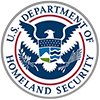For federal agencies, the move to the cloud is inevitable. Even if the pandemic hadn’t forced the government to quickly pivot out of the office, an increasingly mobile workforce combined with the need for data at the edge has pushed agencies to accelerate their migration to the cloud.
According to a recent Deltek report, federal cloud spending is on pace to reach $9.1 billion in FY 2024. And while the benefits of cloud computing abound, from decreased costs to increased collaboration capabilities, the shift also presents unique security challenges — especially in the new era of remote work.
Cloud has transformed the way the government stores and uses data, workloads, and software. It’s never been easier to share information between agencies, allowing for the kind of inter-departmental teamwork that wasn’t possible even five years ago.
But this all has to be done strategically and securely. A cloud migration strategy must consider mission value and cybersecurity at the center of every step. Evaluating the value of such a strategy after it has been executed risks missing on all the promised benefits to information sharing offered by the cloud while introducing new security risks to the enterprise.
Here are some tips to make sure agency transitions are smooth and secure.
Cloud is a Journey, Not a Destination
The first thing to understand is that the move to the cloud doesn’t really ever end. In fact, it’s an ever-evolving process that involves the ability to adapt and scale as missions change. Agencies need to constantly evaluate the most optimal footprint for workloads when comparing multiple cloud providers, SaaS, and on-prem capabilities.
The second thing to understand is that cloud migration can happen in stages. There’s no need to rush everything to the cloud. Agencies should take their time and make sure every step is strategic with security top of mind.
Understand Your Agency’s Unique Cloud Security Needs
Every agency, department, and component of the federal government has vastly different cloud adoption cybersecurity needs. While the overarching goals are the same — to protect federal data while also allowing for safe collaboration — how each agency approaches those goals should be mapped to specific missions.
For example, an office within the Treasury Department might need a security strategy that looks more like those of financial institutions than your standard government agency. While the Environmental Protection Agency might need to implement a plan that takes into account the agency’s large number of personnel that work out in the field.
Working with a solutions provider that can understand these specific challenges is crucial to developing a sound and secure plan for moving to the cloud.
Zero Trust Isn’t Just a Buzzword
New terms are coined every day in the tech world and it’s difficult to decipher which are serious and which are just describing an old technology in a new way. Zero Trust is undoubtedly the former and it could be a huge boon to agencies on their cloud migration journey.
One of the big reasons for the federal government to move to the cloud is for faster and easier cross-agency collaboration. That means sharing data across multiple cloud platforms making it nearly impossible to protect using legacy security measures. Protecting the perimeter doesn’t work anymore.
The Zero Trust model limits a user’s ability to access the network so they can only reach those resources that directly relate to their work. Those permissions can be turned off or on as tasks are finished and new projects emerge. This effectively shifts the perimeter from the network to the individual user.
There are a lot of security considerations when migrating to the cloud, and the best way to tackle them is with a foundational strategy developed for each agency’s unique situation. Bana delivers solutions incorporating security at every level from design and development to integration. Security should be considered every step of the way, never as an afterthought.
For more information about how we can help agencies make their journey to the cloud more secure, contact us.











